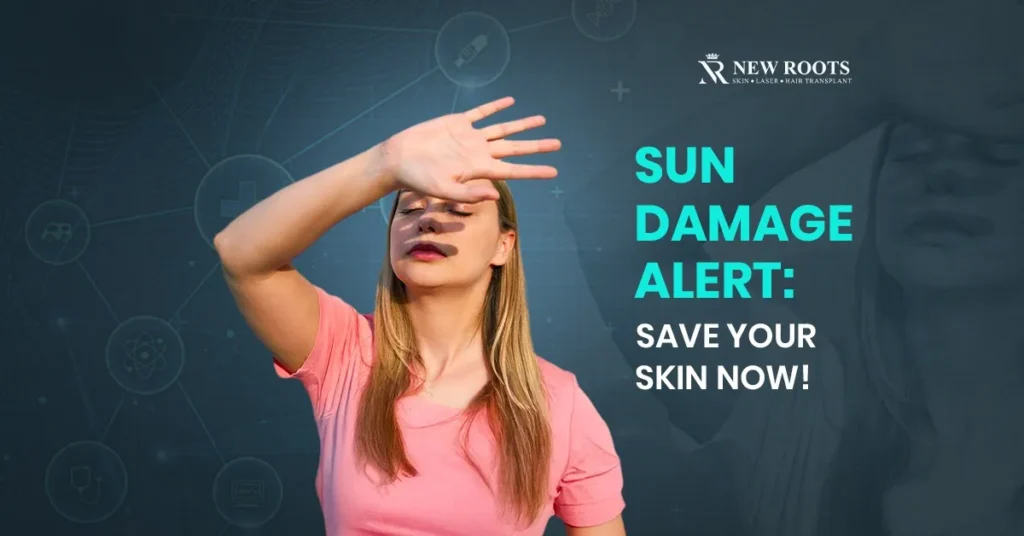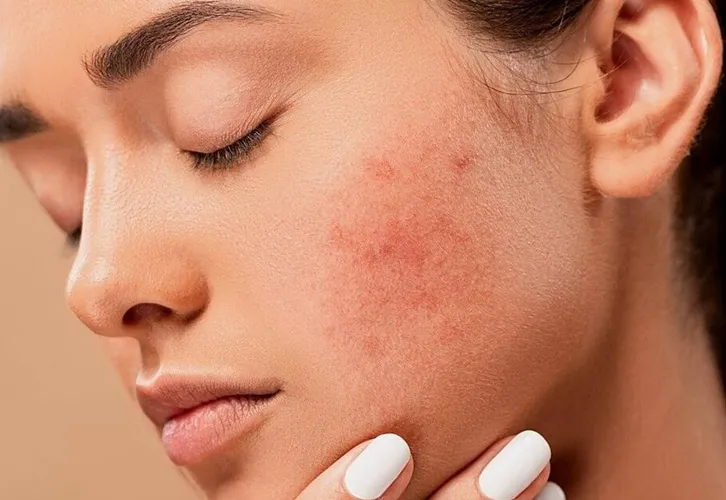Sunlight is essential for life, but in Karnataka’s dry interior zones, its unrelenting intensity can be harsh on your skin.
Districts like Ballari, Chitradurga, Raichur, and Vijayapura face scorching dry heat from March to June—a climate that strips away moisture, breaks down collagen, and speeds up sun damage and visible signs of aging.
Unlike coastal areas such as Mangaluru or Udupi, where humidity and sweat provide a mild barrier, the dry inland heat leaves your skin exposed and vulnerable.
Without that natural buffer, your skin is at higher risk of rapid photoaging, sunburn, hyperpigmentation, and delayed healing. These are classic symptoms of sun damage caused by prolonged and unprotected UV exposure.
If you live in Karnataka’s arid interiors or spend long hours under harsh sunlight, it’s crucial to adopt targeted UV skincare strategies.
This guide offers dermatologist-approved tips to help you protect, repair, and rejuvenate your skin using science-backed methods and sun-specific skincare products designed to combat sun damage effectively.
Table of Contents
Understanding Sun Damage in Karnataka’s Dry Summer Zones
Sun damage results from chronic exposure to ultraviolet (UV) rays, primarily UVA and UVB, which are particularly intense in Karnataka’s dry, plateau regions during peak summer.
Dry regions in Karnataka often lack:
- Atmospheric moisture
- Natural sebum production
- A hydrating skin barrier
These deficiencies make the skin more porous to UV damage, less efficient at self-repair, and prone to premature aging.
Common Skin Concerns in Karnataka’s Dry Summer Climate:
- Hyperpigmentation: Brown sunspots or melasma from melanin overproduction.
- Dry, rough patches: A lack of ambient humidity causes flaking and uneven texture.
- Fine lines and wrinkles: Dehydration accelerates wrinkle formation.
- Redness & irritation: Inflamed, overheated skin from UV overexposure.
- Broken capillaries: Damaged small blood vessels due to heat stress.
- Actinic keratosis: Rough, precancerous patches that arise with chronic sun damage.
Why Dry Heat in Karnataka is Worse Than Humid Heat
In cities like Bengaluru, Mysuru, or Mangaluru, there’s at least some moisture in the air, helping with sweat and skin hydration. But in northeastern and central districts, where the heat is dry and wind-swept, the damage is faster and deeper.
Let’s compare how dry and humid heat affect your skin:
Table 1: Skin Impact – Dry vs. Humid Heat in Karnataka
| Factor | Dry Heat Regions (e.g., Ballari, Raichur) | Humid Heat Regions (e.g., Mangaluru, Udupi) |
| UV Intensity | Very High | Moderate to High |
| Skin Dehydration | Severe | Mild to Moderate |
| Sweat Production | Low | High |
| Moisture Retention | Poor | Better |
| Sunburn Risk | High due to no natural barrier | Moderate (sweat offers mild protection) |
| Recovery Time | Slower | Faster |
Bottom Line: In dry zones of Karnataka, your skin is directly exposed to sun rays with no sweat or humidity barrier, which makes prevention and repair efforts even more critical.
What Makes UV Protection Essential in Karnataka’s Dry Summer?
- Longer daylight hours mean prolonged exposure to UV rays.
- The plateau regions receive direct solar radiation, intensifying oxidative stress.
- Low wind moisture means sun exposure results in faster transepidermal water loss (TEWL), dehydrating the skin quickly.
- Without intervention, this leads to sunburn, pigmentation, collagen breakdown, and in some cases, pre-cancerous skin lesions.
Summer Sun Damage: What to Do – Karnataka Edition
Treating sun damage in Karnataka’s parched interior districts requires much more than a splash of aloe vera. The summer sun in areas like Ballari, Koppal, and Bagalkot is dry, UV-intense, and moisture-stripping. Therefore, an effective UV skin-care regimen must focus on:
- Replenishing lost hydration
- Rebuilding the skin barrier
- Preventing future damage
👉 1. Hydrate Inside-Out
In dry, hot districts of Karnataka, the skin rapidly loses moisture due to low humidity, scorching winds, and constant UV exposure. This causes tightness, flakiness, and delayed healing from sun trauma.
Topical Hydration
Start your skincare with products that draw and lock moisture:
- Hyaluronic Acid Serums – Bind water to deep skin layers
Recommended: Minimalist 2% HA, The Derma Co Hydrating Serum - Ceramide-Based Moisturizers – Repair and reinforce the lipid barrier
Recommended: CeraVe, Bioderma Atoderm, Dot & Key Ceramide Moisturizer - Other Effective Hydrators:
- Glycerin: Attracts water from the air
- Panthenol (B5): Repairs flakiness and inflammation
- Squalane: Mimics skin’s natural oil
Internal Hydration
- Drink 2.5–3 liters of water daily
- Include hydrating fruits like watermelon, cucumber, oranges, and muskmelon
- Add coconut water or buttermilk to combat heat fatigue
- Consume omega-3-rich foods:
- Flaxseeds, walnuts, and chia seeds
- Omega-3s strengthen the skin’s lipid barrier from within and reduce sun-induced inflammation
When hydrated, your skin becomes resilient to UV stress, allowing faster recovery and less long-term pigmentation.
👉 2. Use Barrier-Restoring Ingredients
Sun exposure in districts like Chitradurga and Vijayapura strips the outer skin layer, causing sensitivity, redness, and texture issues. Use these science-backed ingredients to restore the barrier:
Table 2: Top Skin Barrier Restorers
| Ingredient | Function | Products to Look For |
| Ceramides | Repairs skin barrier, locks moisture | Minimalist Ceramide Moisturizer, CeraVe Cream |
| Niacinamide | Fades pigmentation, calms inflammation | Dot & Key Vitamin C + Niacinamide, The Ordinary |
| Squalane | Restores oil balance, soothes skin | Minimalist Squalane, Suganda Squalane Oil |
| Panthenol (B5) | Repairs soothe and deeply hydrate | La Roche-Posay Cicaplast, Dr. Sheth’s B5 Gel |
| Allantoin | Accelerates cell regeneration | Plum Green Tea Gel, Avene Cicalfate |
👉 3. Sunscreen is Non-Negotiable
Even in dry, shaded rural belts of Karnataka, UV rays can bounce off dust, intensifying sun damage. Sunscreen isn’t just protection, it’s treatment.
- Use SPF 50+, broad-spectrum, water-resistant sunscreen
Local Favorites: Re’equil Oxybenzone-Free, Neutrogena Dry Touch, Fixderma Shadow SPF 50+ - Mineral sunscreens (with zinc oxide or titanium dioxide) are ideal for:
- Sensitive or sun-damaged skin
- Children and older adults in dry zones
- Look for sunscreens that include:
- Hyaluronic acid
- Vitamin E
- Aloe vera
Application Rules:
- Reapply every 2–3 hours
- Apply 20 minutes before sun exposure
- Don’t skip—even indoors, near windows, or while driving
UV rays penetrate glass and continue damaging collagen quietly.
Tip: People in Ballari or Kalaburagi often avoid sunscreen due to sweat or dust. Use light gel-based formulas that don’t feel sticky.
👉 4. Night Repair Routine
The best time for your skin to recover from UV trauma is at night. Use repair-focused products that promote cell turnover and reduce photodamage.
Table 3: Night Skincare for Sun Repair
| Step | Recommended Product Types | Function |
| Cleanser | Gentle, non-foaming, hydrating | Removes grime without disrupting the barrier |
| Toner | Alcohol-free, humectant-based | Preps skin, boosts hydration |
| Serum | Retinol (alternate nights), peptides | Repairs DNA damage, boosts collagen |
| Spot Fader | Vitamin C or Kojic Acid | Fades pigmentation, brightens skin |
| Moisturizer | Thick, ceramide-rich, shea butter-based | Seals hydration, prevents transepidermal water loss |
| Face Oil | Rosehip, Marula (optional) | Nourishes dry or flaky patches |
👉5. Clinical Treatments (Optional but Effective)
For severe sun damage, home care may fall short, especially in chronic UV-exposed skin found in agricultural zones, construction workers, or those working outdoors across Karnataka.
Top Dermatologist Treatments for Dry Sun-Damaged Skin
- Laser Toning (Low-Energy Nd: YAG)
Fades pigmentation and improves tone without harming dry skin - Microneedling with Growth Factors
Repairs collagen, tightens texture, and improves scars and lines - Mild Peels (Mandelic or Lactic Acid)
Gently exfoliate, hydrate, and renew skin—safe for dry conditions - PRP (Platelet-Rich Plasma)
Uses your blood plasma to trigger collagen production and deep hydration
Always consult a certified dermatologist before clinical procedures, particularly during peak summer in arid Karnataka zones.
👉 6. Natural Soothers from the Kitchen (Optional)
Used properly, natural ingredients can soothe mild sun damage in day-to-day life. Ideal for people who prefer traditional care alongside modern products.
Table 4: Kitchen Remedies for UV Repair
| Ingredient | Use Method | Benefit |
| Aloe Vera Gel | Direct application | Cools, hydrates, and soothes sunburned areas |
| Cucumber Juice | Use as a toner/mask | Calms inflammation, brightens dull skin |
| Yogurt + Honey | 15-minute face mask | Gently exfoliates and deeply moisturizes |
| Potato Slices | Rub over tanned areas | Natural depigmenting agent |
| Green Tea | Use as a mist or toner | Antioxidant-rich reduces redness |
What to Avoid in Dry, Sun-Damaged Skin (Karnataka Edition)
Treating sun damage in Karnataka’s arid summer zones should always follow one golden rule: less is more. In regions already grappling with harsh UV exposure, hot winds, and extreme dryness, your skin is in a constant state of stress.
Overloading it with too many products or harsh ingredients can backfire, causing more flaking, triggering inflammation, and even worsening pigmentation.
Instead, UV skincare in such climates should be simple, soothing, and moisture-focused. The goal is to calm and repair, not overwhelm.
Think gentle hydration, barrier-repair creams, and broad-spectrum sunscreen that doesn’t dry out the skin.
Minimalism isn’t just a trend here; it’s a survival strategy for maintaining healthy skin under relentless sun exposure.
Avoid these common pitfalls:
- Harsh exfoliation is never a good idea for dry skin in places like Ballari or Raichur. Physical scrubs or strong acids (like high % glycolic acid) can aggravate peeling and disrupt the skin’s healing.
- Fragrance-loaded creams may smell great, but in hot and dry air, they increase the risk of allergic reactions and mask irritation.
- Alcohol-heavy toners strip moisture already lacking in dry climates—and damage the lipid barrier.
- Heavy makeup without hydration or priming will settle into fine lines, exaggerate dry patches, and block skin recovery.
Skipping sunscreen just because it’s cloudy is one of the biggest errors. Even under overcast skies, 80% of UV rays still reach your skin, especially in Karnataka, where dry air makes the skin more vulnerable.
Daily Skin Care Routine for Dry Summer Sun Damage
To truly reverse damage from Karnataka’s scorching summer, the focus must remain on hydration, barrier repair, and consistent UV protection. Below is a practical AM–PM skincare routine designed for dry-climate skin.
Morning Routine
- Cleanser: Use a mild, non-foaming cleanser (e.g., Cetaphil Gentle, Bioderma Atoderm) to avoid moisture loss.
- Hydrating Toner: Choose an alcohol-free toner with glycerin, rose water, or hyaluronic acid.
- Serum: Opt for Vitamin C (antioxidant) to brighten, or Niacinamide to reduce inflammation and pigmentation.
- Moisturizer: Use a ceramide-based barrier moisturizer to seal hydration (Dot & Key, CeraVe, Minimalist Ceramide).
- Sunscreen: Apply a broad-spectrum SPF 50+ every 2–3 hours. Use gel-based, sweat-proof formulas in high-heat regions.
Night Routine
- Cleanser: Clean away sweat, sunscreen, and pollution without over-stripping.
- Toner or Essence: Rehydrate with soothing, alcohol-free toners like rose water or green tea-based formulas.
- Active Serum (3x/week): Choose retinol or peptides to help fade sunspots and encourage skin repair.
- Repair Moisturizer: Use deeply nourishing night creams with shea butter, panthenol, or squalane.
- Face Oil (Optional): Apply rosehip or marula oil on flaky areas to lock in moisture.
Preventing Further UV Damage: Lifestyle Fixes for Karnataka
Repairing sun damage is half the battle. The real win is in preventing future exposure in Karnataka’s intense and dry climate.
Here are easy lifestyle adjustments that work wonders in cities like Gadag, Kalaburagi, and Chitradurga:
- Wear UV-protective clothing and wide-brim hats when outdoors. Look for UPF 50+ tagged fabrics.
- Install UV window films at home or in your vehicle to block UVA rays, which accelerate aging even behind glass.
- Avoid going out between 11 a.m. and 4 p.m., when UV radiation peaks.
- Use facial mists or thermal spring sprays (like Avène, La Roche-Posay) to keep your skin cool and hydrated throughout the day.
- Carry travel-sized sunscreens in your handbag or car to reapply on high-exposure spots—ears, neck, hands, and forehead.
When to See a Dermatologist
If you’re from the dry belts of Karnataka and see persistent redness, new lesions, or slow healing, don’t wait.
Signs you should consult a professional:
- Redness, irritation, or burning persists despite moisturizers
- Flaking or peeling continues for more than 3–4 days
- You observe new growths or lesions that bleed, itch, or change shape
- Pain or extreme sensitivity continues under normal conditions
These may signal deeper UV damage, actinic keratosis, or early-stage skin cancer. Timely intervention by a certified dermatologist in Bengaluru, Hubballi, or Davangere can save your skin’s long-term health.
Final Thoughts: Gentle is Powerful
In Karnataka’s dry, scorching summers, your skin faces a daily battle against dehydration and intense UV radiation. But the good news? Sun damage doesn’t have to be permanent, and with the right care, your skin can recover and even thrive.
Here’s your simple skin-survival mantra for harsh climates:
- Hydrate deeply—both inside and out
- Repair with barrier-loving, moisture-locking ingredients
- Avoid irritants like strong exfoliants, essential oils, and synthetic fragrances
- Never skip sunscreen, even on overcast days—clouds don’t block UV rays
- Eat antioxidant-rich foods and drink plenty of water to nourish yourself from within
In dry-zone skincare, less really is more. Simplicity, consistency, and smart UV skincare choices go much further than expensive quick fixes.
“Don’t rely on miracle products. Build miracle routines.”
With the right hydration, a resilient skin barrier, and smart sun protection, your skin can bounce back stronger, even under the fiercest Karnataka sun.
Need expert support for sun-damaged or dry-climate skin? Visit New Roots – Skin, Laser & Hair Transplant Clinic for dermatologist-backed care and climate-specific treatments that work.
FAQs
Dry heat in regions like Ballari or Raichur lacks atmospheric moisture, causing rapid dehydration and loss of natural skin oils. Without sweat or humidity acting as a buffer, UV rays penetrate more aggressively, leading to tightness, redness, and irritation.
Yes. Up to 80% of UV rays penetrate clouds and glass, which means even indoors or on overcast days in Karnataka’s dry zones, your skin is still at risk of UV damage. Applying broad-spectrum SPF 50+ sunscreen daily is non-negotiable.
For sun-exposed, dehydrated skin, use products containing ceramides, niacinamide, hyaluronic acid, panthenol (B5), and squalene. These ingredients rebuild the skin barrier, retain moisture, and reduce inflammation caused by UV exposure.
Yes, but use them mindfully. Aloe vera, cucumber juice, and yogurt with honey can soothe mild sunburn and calm inflammation. However, for severe sun damage, always pair natural remedies with dermatologically approved products and consult a skin expert if symptoms persist.
Seek professional help if you notice:
- Persistent redness, peeling, or irritation despite moisturizers
- New lesions or patches that bleed, itch, or change color
- Delayed healing or painful sensitivity in sun-exposed areas, These may signal deeper sun damage or precancerous conditions like actinic keratosis.






